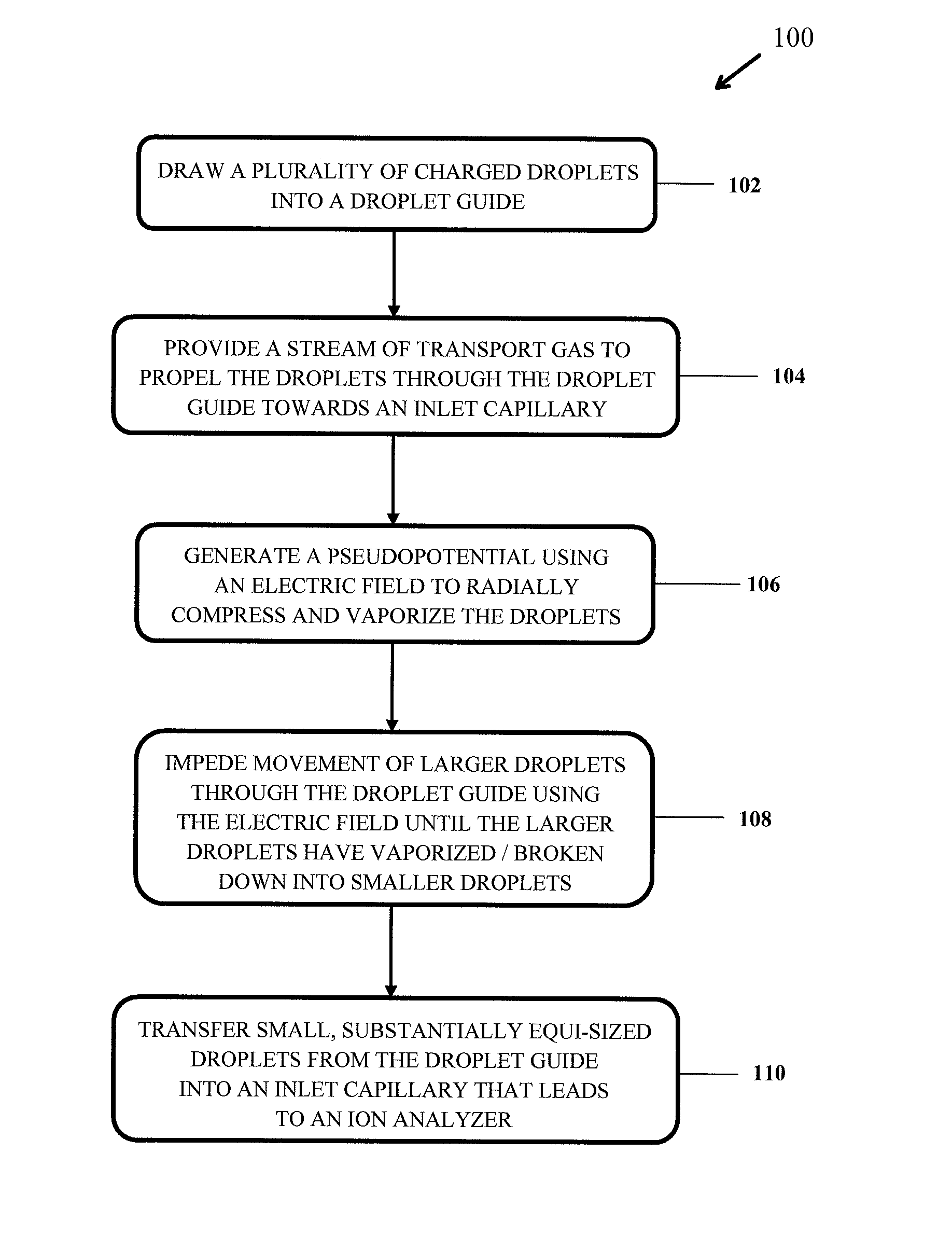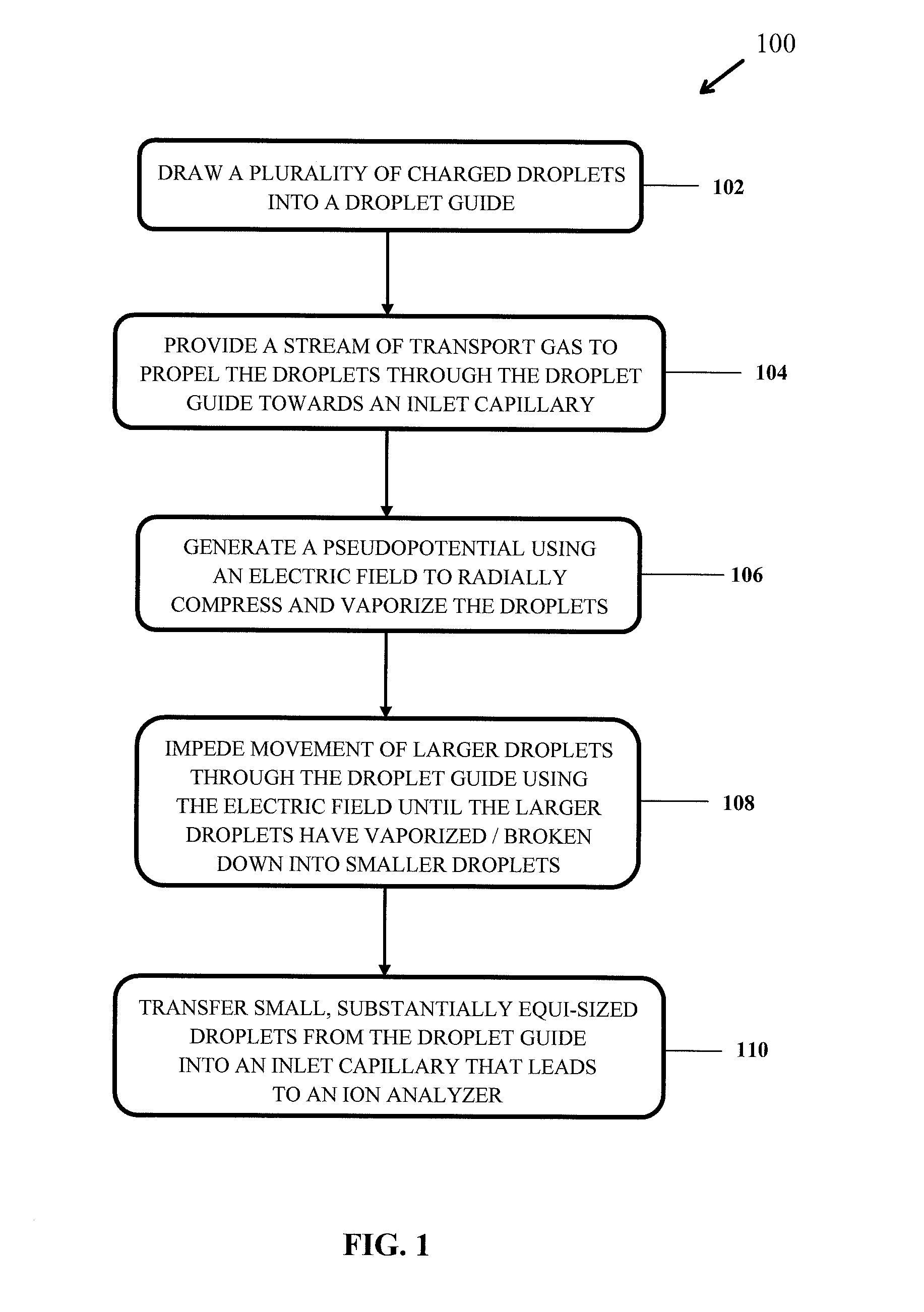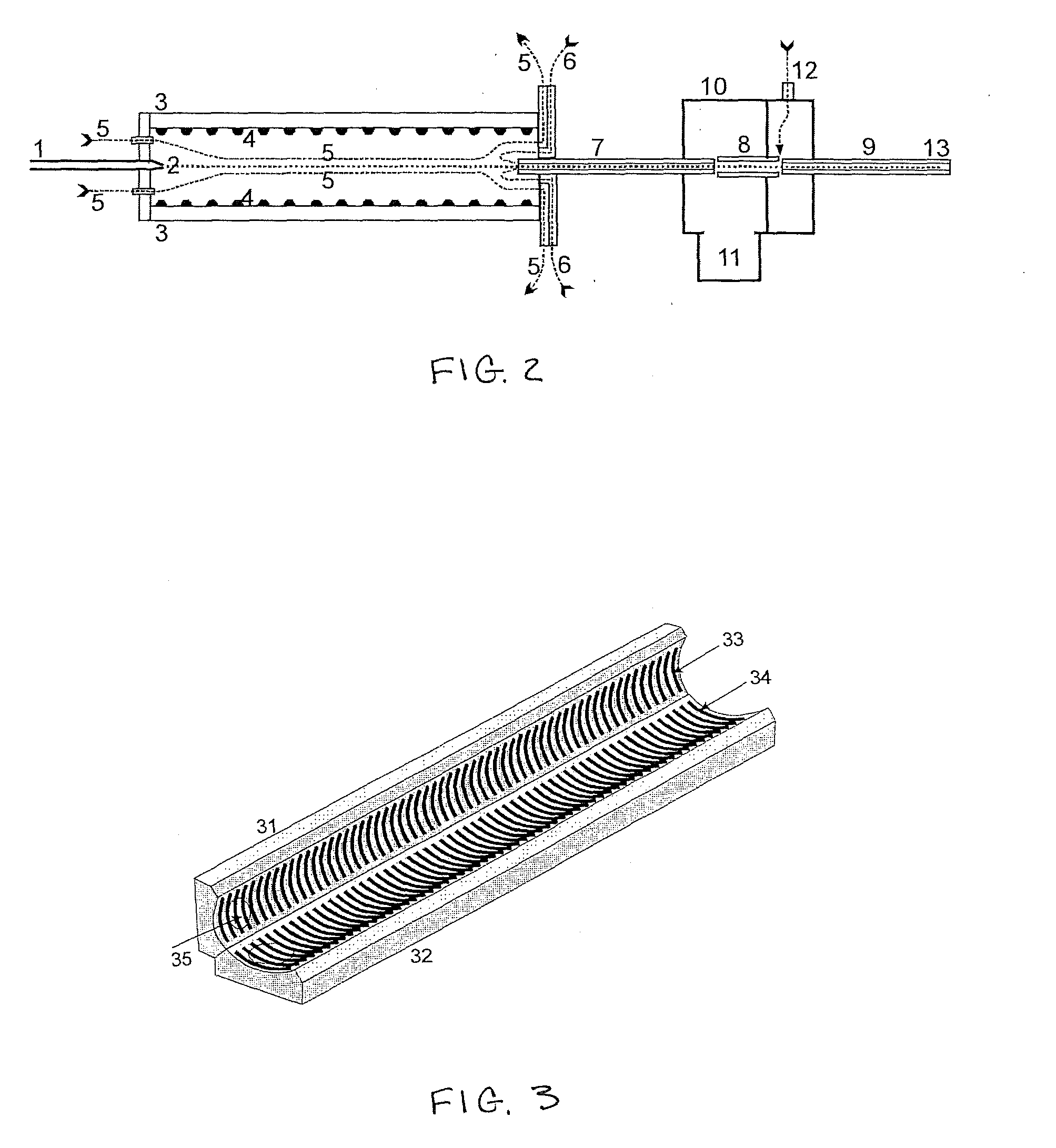Guiding spray droplets into an inlet capillary of a mass spectrometer
a mass spectrometer and droplet technology, applied in the direction of instruments, particle separator tube details, separation processes, etc., can solve the problems of both droplet charges falling below the rayleigh limit, the inability of the jet to be manipulated, and the inlet charge of the droplet to be split, so as to prevent the evaporation of droplets before the end of the evaporation period, improve gas throughput, and improve the effect of focusing
- Summary
- Abstract
- Description
- Claims
- Application Information
AI Technical Summary
Benefits of technology
Problems solved by technology
Method used
Image
Examples
Embodiment Construction
[0037]FIG. 1 illustrates a process 100 for forming a jet of droplets using a guiding device (also referred to below as a “droplet guide”). The jet of droplets is fowled by radially compressing a cloud of charged droplets received from a droplet source, and guiding the droplets along a predefined path to a droplet sink (see steps 102, 104 and 106). The droplets are compressed and guided by audio-frequency alternating voltages applied to electrodes in the guiding device. The term “droplet source” refers to the appearance of droplets at one point of a defined observation region. The term “droplet sink” refers to the disappearance of the droplets at a different point in the region observed.
[0038]The cloud of charged droplets is compressed by inhomogeneous alternating fields on the droplets; i.e., creating “pseudopotentials”. Pseudopotentials are generally known in the art and, therefore, will not be discussed in further detail. The jet of droplets can be compressed (or “focused”) by gen...
PUM
 Login to View More
Login to View More Abstract
Description
Claims
Application Information
 Login to View More
Login to View More - R&D
- Intellectual Property
- Life Sciences
- Materials
- Tech Scout
- Unparalleled Data Quality
- Higher Quality Content
- 60% Fewer Hallucinations
Browse by: Latest US Patents, China's latest patents, Technical Efficacy Thesaurus, Application Domain, Technology Topic, Popular Technical Reports.
© 2025 PatSnap. All rights reserved.Legal|Privacy policy|Modern Slavery Act Transparency Statement|Sitemap|About US| Contact US: help@patsnap.com



